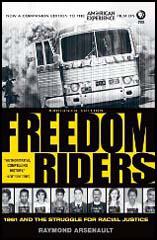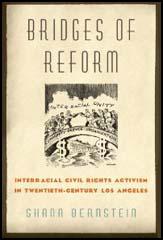Spartacus Review
Volume 56: 28th December, 2011
Civil Rights

Title: Freedom Riders
Author: Raymond Arsenault
Editor:
Publisher: Oxford University Press
Price: £10.99
Bookshop: Amazon
Spartacus Website: Freedom Riders
Category:
The saga of the Freedom Rides is an improbable, almost unbelievable story. In the course of six months in 1961, four hundred and fifty Freedom Riders expanded the realm of the possible in American politics, redefining the limits of dissent and setting the stage for the civil rights movement. In this new version of his encyclopedic Freedom Riders, Raymond Arsenault offers a significantly condensed and tautly written account. With characters and plot lines rivaling those of the most imaginative fiction, this is a tale of heroic sacrifice and unexpected triumph. Arsenault recounts how a group of volunteers--blacks and whites--came together to travel from Washington DC through the Deep South, defying Jim Crow laws in buses and terminals and putting their lives on the line for racial justice. News photographers captured the violence in Montgomery, shocking the nation and sparking a crisis in the Kennedy administration. Here are the key players - their fears and courage, their determination and second thoughts, and the agonizing choices they faced as they took on Jim Crow - and triumphed. Winner of the Owsley Prize Publication is timed to coincide with the airing of the American Experience miniseries documenting the Freedom Rides.

Title: Color in the Classroom
Author: Zoe Burkholder
Editor:
Publisher: Oxford University Press
Price: £22.50
Bookshop: Amazon
Spartacus Website: Freedom Schools
Category:
Color in the Classroom is the first historical analysis of how schools and teachers have powerfully influenced the social construction of race in America. Between the turn of the twentieth century and the historic Brown v. Board of Education decision in 1954, the way that American schools taught about "race" changed dramatically. This transformation was engineered by the nation's most prominent activists, including Franz Boas, Ruth Benedict, and Margaret Mead during World War II. Inspired by scientific racism in Nazi Germany, anthropologists decided that the best way to fight racial prejudice was to teach what they saw as the "truth" about race in the one institution that had the power to do the most good--American schools. Anthropologists created lesson plans, lectures, courses, and pamphlets designed to revise what they called "the 'race' concept" in American education. They believed that if teachers presented race in scientific and egalitarian terms, that American citizens would become less racist. Although nearly forgotten today, this educational reform movement represents an important component of early civil rights activism that emerged alongside the domestic and global tensions of World War II. Drawing on hundreds of first-hand accounts written by teachers nationwide, Zoe Burkholder traces the influence of this anthropological activism on the way that teachers understood, spoke, and taught about race on an everyday basis for more than fifty years. She explains how and why teachers readily translated certain aspects of anthropological theory, such as the division of race into three main categories, while they struggled to make sense of more complex models of cultural diversity and structural inequality. As they translated anthropological theories about race into practice, teachers crafted an educational discourse on race that differed significantly from the definition of race produced by scientists at mid-century. This compelling book will be of special interest to historians of race, civil rights, and education, as well as to anthropologists and educators interested in the role of schools as racializing institutions in America.

Title: Bridges of Reform
Author: Shana Bernstein
Editor:
Publisher: Oxford University Press
Price: £15.99
Bookshop: Amazon
Spartacus Website: Civil Rights Act (1960)
Category:
Bridges of Reform uncovers the early years of civil rights and the sophisticated ways it played out on the West Coast, a situation that radically differed from civil rights in the South and North. In this book, Shana Bernstein uses World War II and Cold War Los Angeles as a locus of civil rights activity and explores its roots in multiracial organizing. There, activists built multiracial collaborations, bringing together the Mexican-, Jewish-, African-, and Japanese-American populations. Later national civil rights legislation and Supreme Court rulings, as well as ethnic-specific community movements, emerged in part from these interracial efforts in Los Angeles. Detailed archival research reveals that significant domestic activism for racial equality persisted during the Cold War in the form of multiracial, anti-communist civil rights collaboration. The United States' global interests during World War II encouraged activists of diverse racial and ethnic backgrounds to join forces. The Cold War facilitated further coalition-building and the pursuit of ongoing racial equality goals as activists sought protection and legitimacy from each other in this conservative era. From a city that incubated civil rights activism, Bernstein broadly connects West Coast activism with the domestic home front, the wars in Europe and Asia, and the onset of the Cold War, creating a unique study of comparative race, ethnicity, and civil rights.
